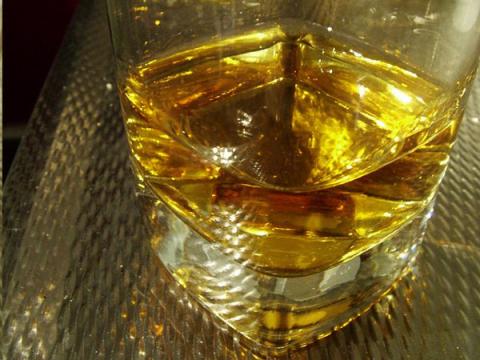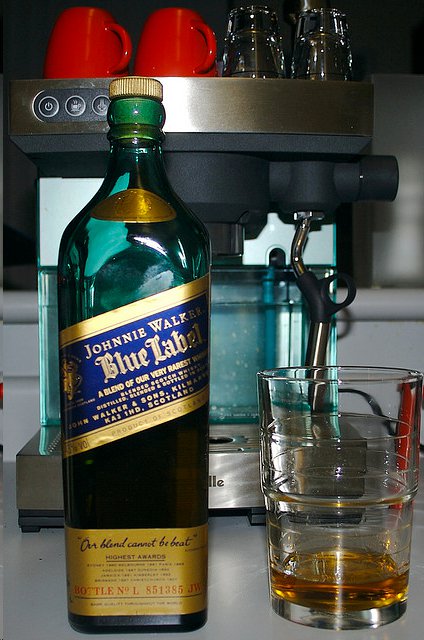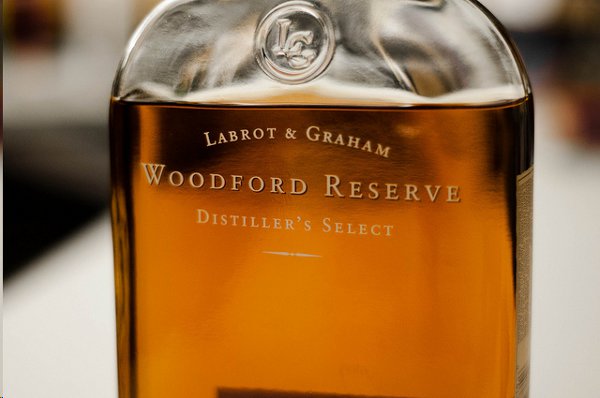A Brief History of Whisky, the ‘Water of Life’

Ahh, whisky. You soothe and keep us warm on these cold winter’s nights. But who are you really? And who’s this so-called bourbon that shows up to the party sometimes? In the endless quest to decipher the meaning of life, let the journey begin with whisky.
Into the Barrel
Whisky is made from a fermented grain mash. The mix might include corn, rye, wheat, barley and other grains, and is aged for a long time in wooden barrels.
Whisky can only be classified as scotch if it was made in Scotland. The earliest record of distilling in Scotland is from 1494, according to whisky.com. It was often made in monasteries and used for medicinal purposes, termed “aqua vitae,” or “water of life.”
After whisky went through an underground smuggling period due to taxes on both malts and the whisky itself, the government passed the Excise Act in 1823, sanctioning whisky distillation for a cost of 10 pounds and a payment per gallon of the pure spirit. Smuggling died down immensely as a result.
Then came grain whisky in 1831, which was less intense than malt whisky, capturing a wider audience to enjoy drinking the spirit.
A stall in brandy production in 1880s France left an opening for whisky to emerge as the top player in spirits. Whisky is enjoyed in more than 200 countries, from India to Sweden to North America.

General Spelling Rules
“Whiskey” is used for whiskeys made in Ireland and North America. “Whisky” is used for those made in Canada, Japan, Scotland, and Wales. Your best bet is to go by what’s on the label of the bottle. (For example, Maker’s Mark is labeled as bourbon “whisky,” even though it’s made in Kentucky.) Though “scotch” has become ubiquitous, it is simply known as “whisky” in Scotland.
Varieties of Whiskey in North America
North American whiskeys must be no more than 62.5 percent ABV (125 proof) before being aged in barrels and the result must be no less than 40 percent alcohol (80 proof) to be bottled. They are classified by the type of grains used, the percentage of alcohol at which distillation occurs, and the length and method of aging. Ninety-nine percent of US-produced whiskey is made at 13 large distilleries.
Bourbon Whiskey
Bourbon whiskey must be produced in the United States, have at least 51 percent corn, be distilled at less than 80 ABV (160 proof) and be aged for at least two years in new charred barrels.
Tennessee whiskey has the same requirements, but is made in Tennessee and filtered through a bed of sugar maple charcoal, which gives it a clean and very smooth finish. Rye whiskey has the same requirements as bourbon, replacing the corn with at least 51 percent rye grain. Some straight rye is sold, but most is blended with other whiskeys. Its taste is more dry and grainy than a creamy, slightly sweet bourbon.

Blended American whiskey must have at least 20 percent straight whiskey, balanced with an unaged neutral spirit or sometimes high-proof light whiskey. It tastes similar to bourbon. Moonshine whiskey is clear corn whiskey, distilled from corn and sugar and aged in Mason jars and jugs. Moonshine is known as the first American whiskey, dating back to the 1600s.
Canadian whisky is made mostly of corn or wheat, with some rye, barley or barley malt. It doesn’t have regulations for grain percentage like American whiskey. It must be aged at least three years.
How to Drink the Drink
Purists argue that adding ice (which then melts) dilutes whiskey and causes it to lose flavor. But some distilleries actually recommend adding a splash of water, which they claim brings out the aroma of the beverage. It also decreases the harshness of the spirit, allowing you to recognize some of the subtle nuances. The House of Walker, for example, serves up Johnnie Walker varieties, and guides guests through tasting them individually as is, with a dash of water, and then with ice.
A tour at Old Jameson in Dublin, Ireland includes an epic finale -- the tasting. Surprisingly, options include Jameson with cranberry juice, Sprite, or the increasingly popular beverage Jameson and ginger ale.
Other popular whiskey cocktails include the Manhattan (rye whiskey or bourbon), Old-Fashioned (bourbon or rye whiskey), Whiskey Sour (bourbon), Sazerac (rye whiskey) and Mint Julep (bourbon).
However you drink it, this historic drink offers a ton of exploration of tastes and is perfect for warming up a cold night.
Author Bio:
Beth Kaiserman is a contributing writer at Highbrow Magazine.
For Highbrow Magazine






























































































































































































































































































































